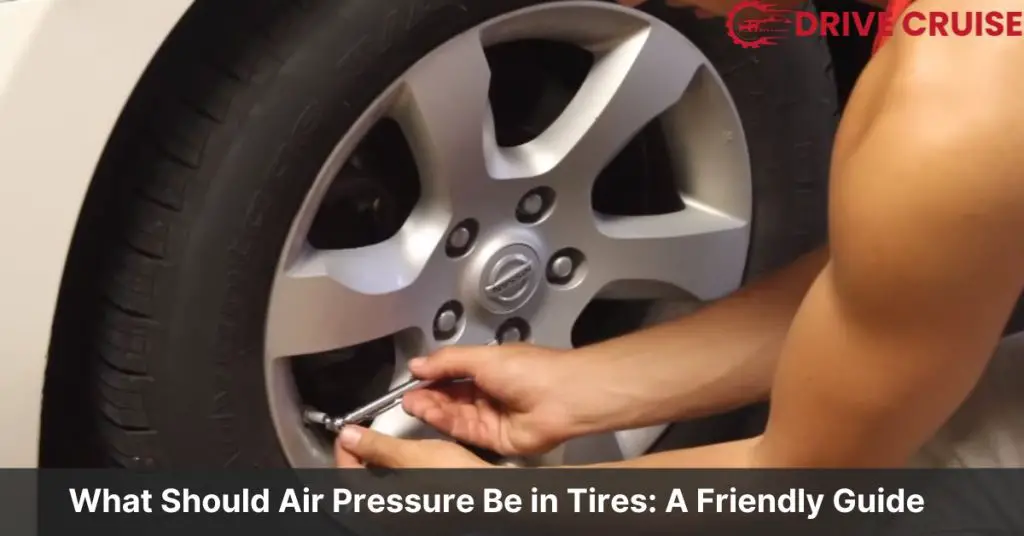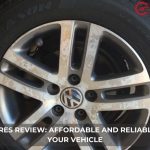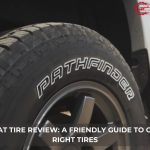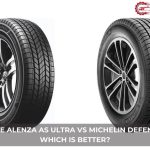Maintaining proper tire pressure is crucial for a safe and efficient driving experience. Not only does it improve your vehicle’s performance, but it also extends the lifespan of your tires and saves you money on fuel costs. In this article, we’ll cover everything you need to know about tire pressure, including how much air should be in a tire, what pressure your tires should be at, and what happens when your tires are underinflated or overinflated.
Driving on underinflated or overinflated tires can have negative impacts on your vehicle’s safety, performance, fuel efficiency, and tire lifespan. When your tires are underinflated, they can cause your vehicle to handle poorly, decrease your fuel economy, and shorten the lifespan of your tires. Similarly, overinflated tires can lead to a harsh ride, uneven tire wear, and a decreased ability to handle road hazards. Therefore, it is important to ensure that your tires are inflated to the recommended pressure levels.
Finding the Right PSI: It’s Not a One-Size-Fits-All Answer
When it comes to tire pressure, there is no one-size-fits-all answer. The ideal tire pressure for your vehicle is specific and can be found in two key places: the placard sticker and the owner’s manual.
Importance of Manufacturer Recommendations
The placard sticker is typically found on the driver’s door jamb and displays the manufacturer’s recommended PSI for both unloaded and possibly loaded conditions. It’s important to follow these recommendations because tire pressure affects both vehicle performance and safety.
The owner’s manual is another source for recommended tire pressure specifications. It’s a good idea to check both the placard sticker and the owner’s manual to ensure you have the correct tire pressure for your vehicle.
Understanding Load Impact on Pressure
The recommended PSI often applies to unloaded or partially loaded vehicles. If you plan to carry a heavier load, such as passengers or cargo, you might need to adjust the tire pressure slightly according to the vehicle manufacturer’s instructions.
It’s important to note that over-inflating or under-inflating your tires can have negative consequences. Over-inflating your tires can cause them to wear out more quickly in the center of the tread, while under-inflating them can cause them to wear out more quickly on the edges.
In general, most passenger cars have a recommended tire pressure between 30 and 35 PSI. However, this can vary depending on the vehicle and its intended use. It’s important to follow the manufacturer’s recommendations for the best performance and safety of your vehicle.
Beyond the Manual: Additional Considerations for Optimal Pressure
When it comes to maintaining the right air pressure in your tires, there are a few additional factors to consider beyond what’s in the owner’s manual. Here are some things to keep in mind:
Weather Conditions: Cold Weather and Pressure Loss
In colder temperatures, tire pressure can decrease slightly. This is because cold air is denser than warm air, which can cause the air inside your tires to contract. As a result, it’s important to check and adjust your tire pressure when transitioning to colder seasons to ensure that it meets the manufacturer’s recommendations. This will help you maintain optimal handling, fuel efficiency, and tire life.
Driving Habits: Performance vs. Comfort
Some drivers prefer slightly higher tire pressure for a more responsive handling feel, especially at higher speeds. However, exceeding the manufacturer’s recommendations can negatively impact ride comfort and tire wear. It’s important to strike a balance between performance and comfort by following the recommended tire pressure for your vehicle.
Spare Tire Pressure: Being Prepared
Many drivers forget that the spare tire also needs to be inflated to the recommended PSI. This information can be found in the owner’s manual or on a placard sticker inside the spare tire compartment (if applicable). Make sure to check the spare tire pressure regularly to ensure that it’s ready to use in case of an emergency.
Taking Control: Monitoring and Maintaining Tire Pressure
Using a Reliable Tire Pressure Gauge
To ensure accurate readings, it is recommended to use a high-quality tire pressure gauge. There are two types of pressure gauges: digital and analog. Digital gauges are more precise and easier to read, while analog gauges are cheaper and do not require batteries. Regardless of the type of gauge you choose, make sure it is reliable and easy to use.
When using a tire pressure gauge, make sure to remove the screw-on cap from the valve stem and press the gauge’s fitting on the valve stem in a single, firm motion. The tire pressure will be displayed on the gauge’s screen or dial. Do not overinflate the tires, as this can lead to premature wear and a rougher ride.
Checking Pressure Regularly
It is important to check your tire pressure at least once a month and before long trips. This will help maintain optimal tire performance and increase your vehicle’s fuel efficiency. It is also important to check your tire pressure when the tires are cold, as driving can increase tire pressure and result in inaccurate readings.
To determine the recommended tire pressure for your vehicle, refer to the owner’s manual or the tire information placard located on the driver’s side doorjamb. The recommended tire pressure is usually expressed in pounds per square inch (PSI).
Visual Inspection for Uneven Wear or Damage
During pressure checks, it is recommended to visually inspect the tires for uneven tread wear or potential damage. Uneven wear can indicate alignment or suspension issues, while damage can lead to tire failure and compromise your safety on the road. If you notice any issues, it is best to have a professional inspect and repair the tires.
When in Doubt, Consult a Tire Professional
If you’re unsure about the optimal tire pressure for your vehicle, it’s always a good idea to consult a trusted tire professional. They can provide personalized advice based on factors like your driving habits, typical load, and climatic conditions. This can help ensure that you’re maintaining the right level of pressure for your specific vehicle, which can improve performance and safety.
Tire professionals can also help identify any underlying issues that might be causing pressure fluctuations. For example, if you notice that your tire pressure keeps dropping, even after you’ve filled them up, it could be a sign of a slow leak or other problem. A tire professional can inspect your tires and help diagnose the issue, so you can take the appropriate steps to fix it.
When consulting a tire professional, be sure to provide them with as much information as possible about your vehicle and driving habits. This can help them provide more accurate advice on the optimal tire pressure for your needs. It’s also important to note that you should not inflate your tires to the maximum pressure listed on the sidewall. This pressure is the maximum safe pressure for the tire, but it may not be the optimal pressure for your specific vehicle.
Conclusion: The Right Pressure for a Smoother, Safer Ride
In conclusion, maintaining the correct tire pressure is crucial for a smooth and safe ride. Your vehicle’s manufacturer recommends a specific tire pressure range, which can usually be found on a sticker in the driver’s door jamb. It’s important to follow these recommendations to ensure optimal safety, performance, and tire life.
Inflating your tires to the maximum PSI is not recommended, as it can cause your tires to wear out faster and reduce their lifespan. Overinflated tires can also negatively affect your car’s handling and ride comfort, as they may bounce and jolt more on uneven roads.
Using a reliable tire pressure gauge is key to ensuring that your tires are inflated to the correct pressure. Checking your tire pressure regularly, at least once a month, is also important to maintain optimal performance. You should also visually inspect your tires for any abnormalities, such as bulges, cracks, or punctures, which can affect their performance and safety.
Consulting a tire professional can provide valuable insights and ensure that your tires are inflated for optimal performance in any driving condition. They can also help you choose the right tires for your vehicle and driving needs, which can further improve your ride quality and safety.
Related Posts:











